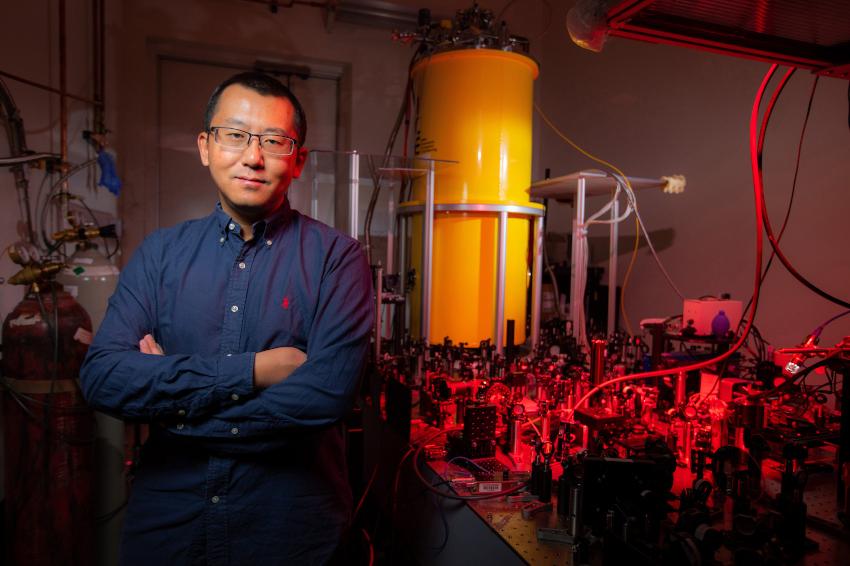New device measures supercurrent flow
22.02.2023 - Scientists develop the first cryogenic magneto-terahertz scanning near-field optical microscope.
A new sort of microscope can help researchers understand and ultimately develop the inner workings of quantum computing. Jigang Wang from Iowa State University described his instrument that works in extreme scales of space, time and energy – billionths of a meter, quadrillionths of a second and trillions of electromagnetic waves per second. He calls the instrument a “cryogenic magneto-terahertz ccanning near-field optical microscope (cm-SNOM). “It’s the first in the world.”
The instrument can focus down to about 20 nanometers, while operating below liquid-helium temperatures and in strong, Tesla magnetic fields. That’s small enough to get a read on the superconducting properties of materials in these extreme environments. Superconducting materials are being considered for quantum computing. Superconducting quantum bits, or qubits, are the heart of the new technology. One strategy to control supercurrent flows in qubits is to use strong light wave pulses. “Superconducting technology is a major focus for quantum computing,” Wang said. “So, we need to understand and characterize superconductivity and how it’s controlled with light.”
And that’s what the cm-SNOM instrument is doing. Wang and his team of are taking the first ensemble average measurements of supercurrent flow in iron-based superconductors at terahertz energy scales and the first cm-SNOM action to detect terahertz supercurrent tunneling in a high-temperature, copper-based, cuprate superconductor. “This is a new way to measure the response of superconductivity under light wave pulses,” Wang said. “We’re using our tools to offer a new view of this quantum state at nanometer-length scales during terahertz cycles.”
Ilias Perakis from the University of Alabama at Birmingham has developed the theoretical understanding of light-controlled superconductivity. He said, “By analyzing the new experimental datasets, we can develop advanced tomography methods for observing quantum entangled states in superconductors controlled by light.”
Now that those measurements are happening at the ensemble level, Wang is looking ahead to the next steps to measure supercurrent existence using the cm-SNOM at simultaneous nanometer and terahertz scales. His group is searching for ways to make the new instrument even more precise. Could measurements go to the precision of visualizing supercurrent tunneling at single Josephson junctions, the movement of electrons across a barrier separating two superconductors? “We really need to measure down to that level to impact the optimization of qubits for quantum computers,” he said. “That’s a big goal. And this is now only a small step in that direction. It’s one step at a time.” (Source: Iowa State U.)







